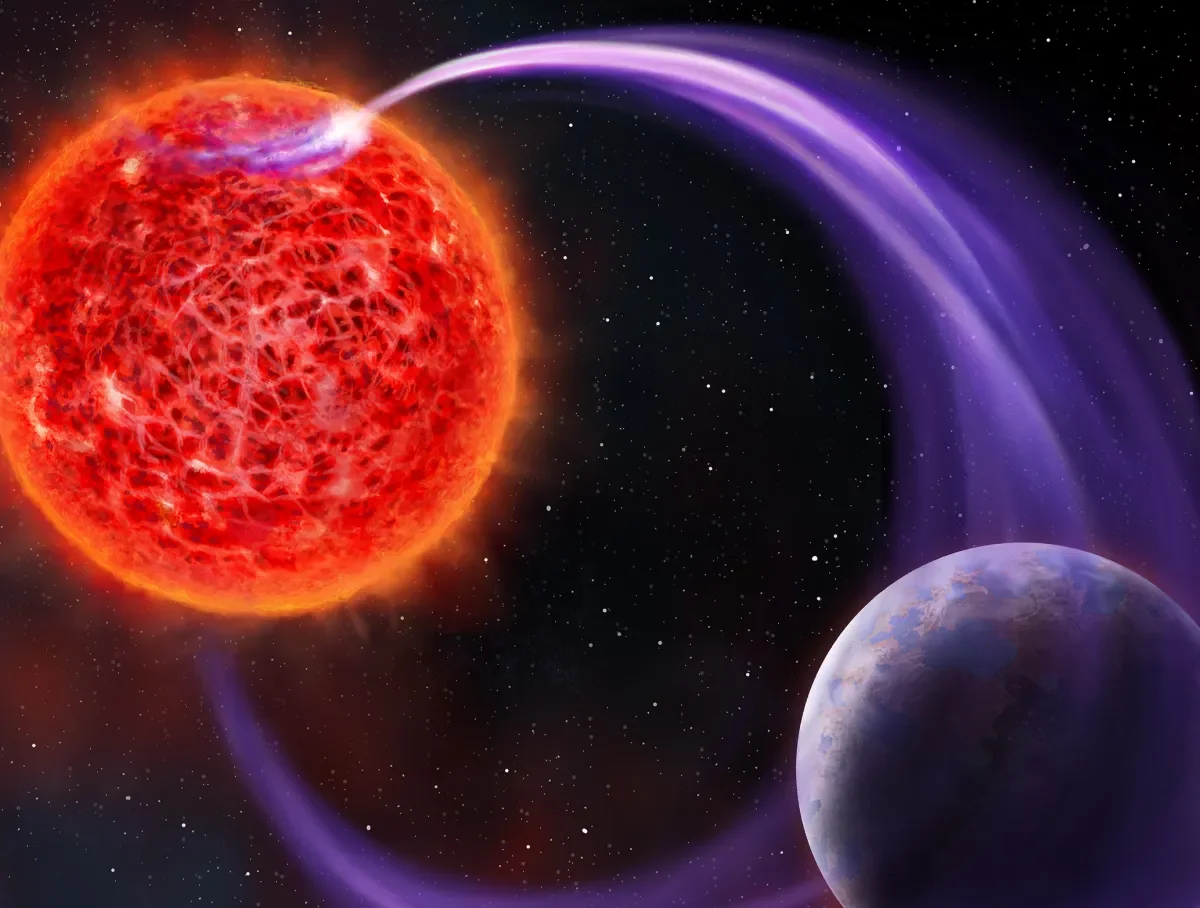

LOFAR radio telescope pioneers new ways to study planets beyond our solar system
A paper published today in Nature Astronomy, details how the Low Frequency Array (LOFAR) radio telescope has been used by astronomers to discover unusual radio waves coming from a nearby star.
The paper was co-authored by Dublin City University’s Dr Shane O’Sullivan from the School of Physical Sciences and the Centre for Astrophysics and Relativity.
The unusual radio waves detected by the LOFAR radio telescope are produced by aurorae caused by the interaction between the magnetic field of this star and an exoplanet (a planet beyond our solar system). The star, a red dwarf called GJ1151, is located in the Ursa Major constellation and is almost 25 light years from Earth.
This is the first time astronomers have seen these type of radio waves from a star-planet interaction, and it provides a new opportunity to discover exoplanets in the habitable zone and to study the environment they exist in.
About red dwarf stars
GJ1151 is a red dwarf - a class of stars smaller and cooler than the Sun but with intense magnetic fields. Red dwarfs are the most abundant type of star in our Milky Way and are more likely to host potentially habitable planets. However, such planets will have to orbit much closer to the star compared to the distance between the Sun and the Earth and will be strongly affected by the intense stellar magnetic field. This magnetic interaction can heat and even erode the exoplanet’s atmosphere. Radio observations are one of the few tools available to study the magnitude of this effect.
Dr Harish Vedantham, the lead author of the study at the Netherlands Institute for Radio Astronomy (ASTRON) said
“Our work has put us on an intriguing path by demonstrating that LOFAR is sensitive enough to detect the long-predicted radio waves from a star-planet interaction. We want to use future radio observations to figure out how detrimental this interaction is to exoplanets and what it means for habitability.”
Dr. Shane Sullivan said
“This is an exciting time for radio astronomy, as the LOFAR Two-metre Sky Survey (LoTSS) is providing the opportunity for many new discoveries such as this one. DCU is part of a consortium running the I-LOFAR station located in Birr, Co. Offaly and the Irish station forms part of the International LOFAR Telescope that made the observations.”
About LOFAR
The international LOFAR telescope (ILT) consists of a European network of radio antennas,
connected by a high-speed fibre optic network spanning seven countries. LOFAR was designed, built and is now operated by ASTRON (Netherlands Institute for Radio Astronomy), with its core located in Exloo in the Netherlands. LOFAR works by combining the signals from more than 100,000 individual antenna dipoles, using powerful computers to process the radio signals as if it formed a ‘dish’ of 1900 kilometres diameter.
LOFAR is unparalleled given its sensitivity and ability to image at high resolution (i.e. its ability to make highly detailed images), such that the LOFAR data archive is the largest astronomical data collection in the world and is hosted at SURFsara (The Netherlands), Forschungszentrum Juelich (Germany) and the Poznan Super Computing Center (Poland). LOFAR is a pathfinder of the Square Kilometre Array (SKA), which will be the largest and most sensitive radio telescope in the world.
Centre for Astrophysics and Relativity
Paper link
'Coherent radio emission from a quiescent red dwarf indicative of star–planet interaction' is published in Nature Astronomy today
